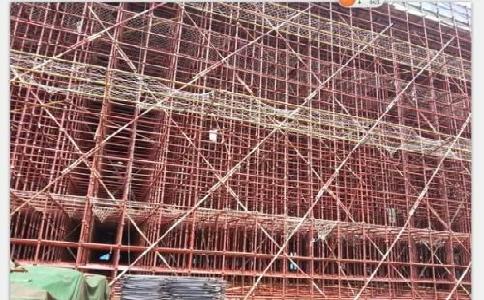Some common problems of scaffolding
Scaffolding Straightness and Horizontality Promise Error Item (Straightness) Promise Error (mm) Item (Levelness) Promise Error (mm) Each step h / 1000 and ± 2.0 within one span The height difference between the two ends of the horizontal frame ± l / 600 and ± 3.0 scaffold all H / 600 ± 50 scaffold all ± L / 600 and ± 50 Note: h–step distance; H–scaffold height; l–span distance; L scaffold length.
Part of the deformation caused by the settlement of the scaffold caused by the settlement of the foundation. On the cross section of the double-row rack, splayed 戗 or scissor braces are set up, and a set of poles are set up every other row until the deformation zone is out of the row. The stilt or scissors must be placed on a solid and reliable foundation.

The deflection of the cantilevered steel beam on which the scaffold is rooted exceeds the prescribed value. The anchorage point of the cantilevered steel beam should be reinforced. The steel beam is supported by a steel support and a U-shaped bracket and screwed against the roof. There is a gap between the embedded steel ring and the steel beam, and it must be prepared with a horse wedge. The steel wire rope at the outer end of the hanging steel beam is inspected one by one and fully tightened to ensure uniform stress.
The scaffolding unloading and tensioning system partly caused damage, and it should be immediately recovered according to the original unloading and tensioning method established in the original plan, and the deformed parts and members must be corrected. To correct the outward deformation of the scaffold, first set a 5t reverse chain for each slot, tighten the structure, loosen the rigid pull joints, and tighten the reverse chain inward until the deformation is corrected, and do the rigid pull. Connect and tighten the steel wire rope at each unloading point to make the force uniform,-finally release the inverted chain.






